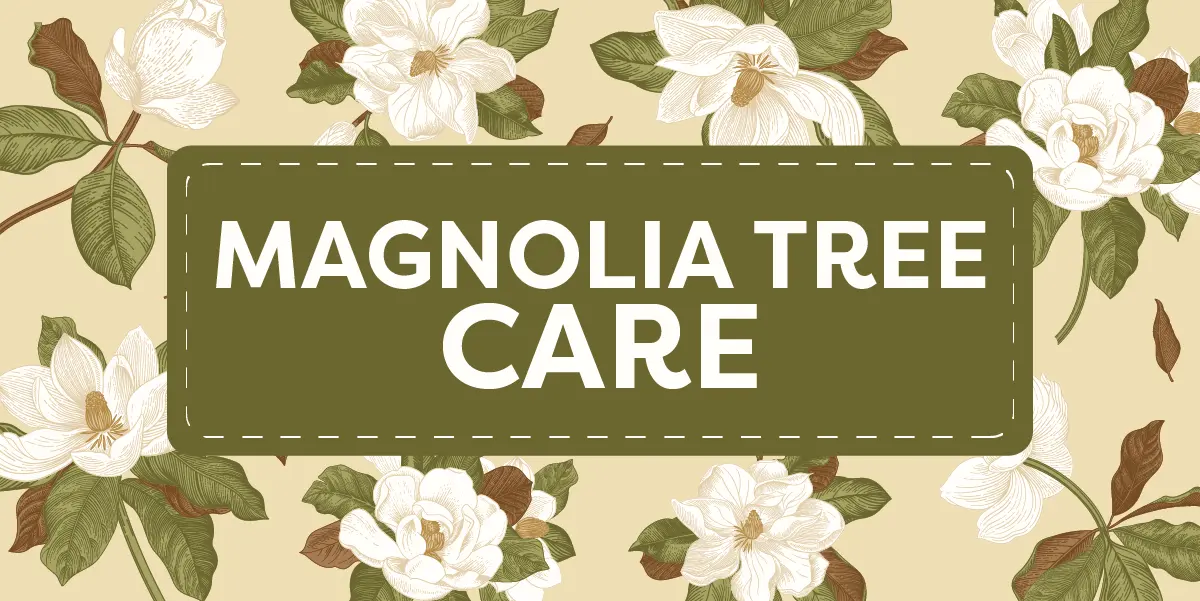You can grow almost anything in Southern California.
The magnolia tree, which evokes images of the humid American South, flourishes in California’s much dryer climate, although with more TLC.
A Brief History of the Magnolia Tree
Fossil evidence traces the magnolia tree to over 95 million years ago, predating the evolution of bees. It grew naturally in North America, Central America, Asia, and the West Indies.
The Aztecs used magnolia bark and flowers to treat various ailments, ranging from respiratory problems to anxiety. They flavored their chocolate drinks with magnolia essence.
The French botanist Charles Plumier first classified magnolias botanically in 1703. He named the genus “Magnolia” in honor of Pierre Magnol, a renowned botanist and professor of medicine at the University of Montpellier in France.
Since then, over 200 species of magnolia trees have been identified.
Magnolia trees are prized for their large, showy flowers in shades of white, pink, purple, and yellow.
Their thick, glossy leaves and gaudy flowers make them a common sight in Southern California landscapes where, under the right conditions, they can grow to impressive sizes.
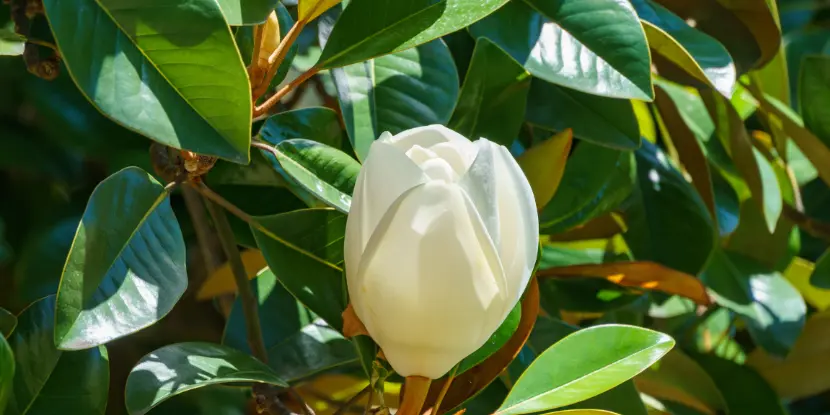
A closeup of the large, glossy, spear-like leaves of the Southern Magnolia.
Choosing the Best Varieties for SoCal
Southern California’s climate is perfect for heat and drought-tolerant magnolia varieties, including:
1. Southern Magnolia (Magnolia grandiflora)
A classic choice for larger landscapes. It has massive, fragrant white flowers and evergreen foliage. While not the most drought-tolerant, it adapts well with established roots.
- Maximum height. 60–80 feet
- Maximum width. 30–50 feet
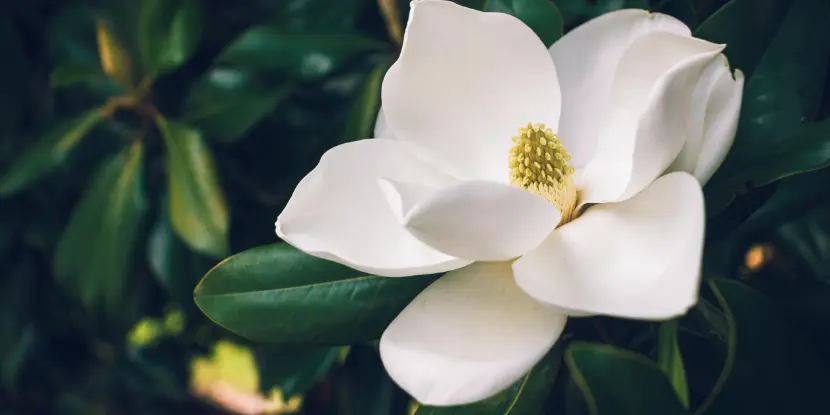
The open blossom of a Southern Magnolia tree.
2. Little Gem Magnolia (Magnolia grandiflora ‘Little Gem’)
A compact version of the Southern Magnolia, ideal for smaller spaces. It bears evergreen foliage and fragrant blooms throughout the summer.
- Maximum height: 20–30 feet
- Maximum width. 10–15 feet
3. D.D. Blanchard Magnolia (Magnolia x soulangeana ‘D.D. Blanchard’)
A hybrid variety combining the best features of the Southern Magnolia and the D.D. Blanchard, resulting in a beautiful and heat-tolerant tree.
- Maximum height: 25–30 feet
- Maximum width: 15–20 feet
4. Sweet Bay Magnolia (Magnolia virginiana)
Native to the Eastern US but does well in Southern California. It has small, white flowers with a pleasant aroma.
- Maximum height: 10–20 feet
- Maximum width: 10–15 feet
5. Saucer Magnolia (Magnolia x soulangeana)
A popular hybrid producing large pink or purple flowers. With proper care, it can grow up to 20 feet tall.
- Maximum height: 20–25 feet
- Maximum width: 15–20
6. Loebner Magnolia (Magnolia x loebneri)
Another hybrid that grows well in Southern California. It has large white flowers and can tolerate heat and drought.
- Maximum height: 15–20 feet
- Maximum width: 10–15 feet
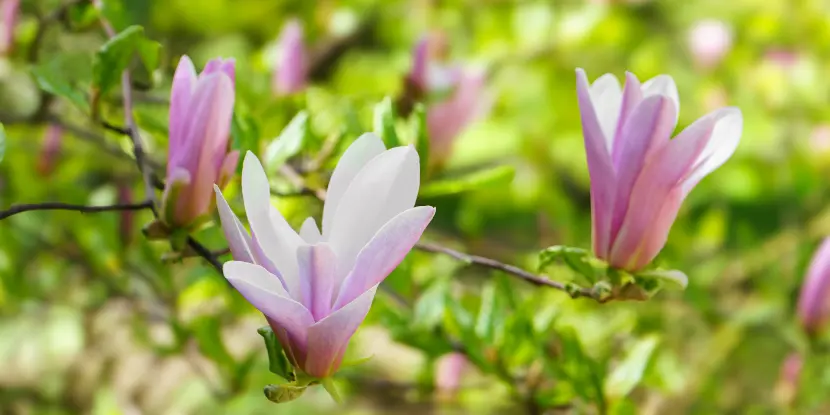
The pink flowers of Magnolia Loebner.
Growing Magnolia Trees from Cuttings
- Select a healthy branch from the magnolia tree during its dormant season (late fall or winter).
- Cut about 6 inches of the branch, just below a set of leaves.
- Remove all but the top two or three sets of leaves.
- Dip the cut end in rooting hormone and plant it in well-draining potting soil.
- Keep the cutting in a warm and humid environment, misting it daily.
- New roots should have formed after about six weeks, and you can transplant them into a larger pot or directly into your landscape.
Planting Your Magnolia Tree
Choosing the Right Spot
Magnolias love the sun but can also tolerate partial shade. Make sure the planting location gets at least 6 hours of sunlight a day. Give the tree room for growth without crowding other plants or structures.
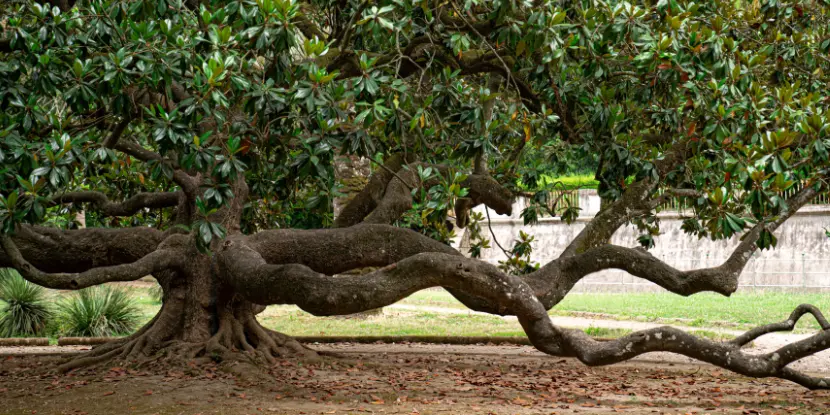
An adult magnolia tree with gnarled branches.
Soil Preparation
- Aim for a pH between 5.5 and 6.5.
- Mix compost or well-rotted manure into the soil to improve its structure and nutrient content.
- Ensure good drainage. Consider building a raised bed to prevent waterlogging if your soil is heavy clay.
Planting Steps
- Transplant in late winter or early spring when the tree is dormant.
- Dig a hole twice as wide and just as deep as the root ball.
- Place the magnolia in the hole, keeping the root flare level with or slightly above the ground surface.
- Fill the hole with soil, pressing down gently to remove air pockets. Water thoroughly to settle the soil.
Watering & Mulching
Magnolias need consistent moisture, especially during their first few years.
- Water deeply once or twice a week, rather than frequent shallow watering. This encourages deep root growth.
- Before watering, check the soil moisture by sticking your finger about an inch into the soil. If it feels dry, it’s time to water.
- Mulch retains soil moisture and suppresses weeds. Apply a 2-4 inch layer of mulch around the tree’s base, but keep it a few inches away from the trunk to prevent rot.
Fertilizing Your Magnolia
- Apply a balanced, slow-release fertilizer in early spring and again in late summer.
- Too much fertilizer can lead to excess foliage at the expense of flowers.
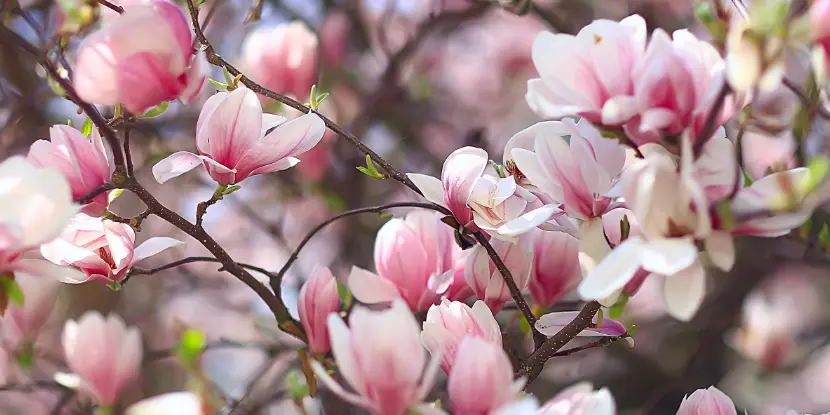
Delicate pink magnolia blossoms.
Pruning
- Pruning helps maintain the shape and health of your tree.
- The best time to prune is right after magnolias finish blooming.
- Remove dead or diseased branches and thin out crowded areas to improve air circulation.
- Avoid heavy pruning, as magnolias can be slow to recover.
Dealing with Pests & Diseases
Magnolias are relatively pest-free but occasionally suffer from issues like scale insects or fungal diseases.
- Scale Insects: Look for small, brown or white bumps on the leaves and stems. Treat with horticultural oil or insecticidal soap.
- Fungal Diseases: Prevent fungal issues by ensuring good air circulation and avoiding overhead watering. Treat with fungicides if necessary.
Seasonal Care Tips
Spring & Summer
- As temperatures rise, ensure your magnolia gets enough water.
- Apply a balanced fertilizer in early spring to support new growth.
Fall & Winter
- Reduce the frequency of watering as the weather cools.
- Young magnolias can be susceptible to frost. Protect them with a frost cloth or burlap if temperatures drop too low.
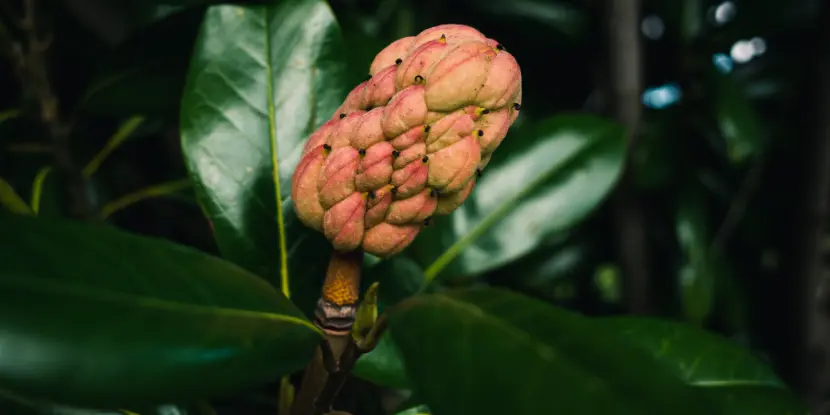
The seed pod of a Southern Magnolia tree.
FAQs: Caring for Magnolia Trees
Q: How fast do magnolia trees grow?
Most magnolia trees grow at a moderate rate of 1–2 feet per year. However, growth can vary based on the variety and growing conditions.
Q: Can I grow magnolias in containers?
You can grow smaller varieties. Just be sure the container is large enough to accommodate the root system and has good drainage.
Q: Why are my magnolia leaves turning yellow?
This could be a sign of overwatering, poor drainage, or nutrient deficiency. Check the soil moisture and consider a soil test to identify any nutrient imbalances.
Q: When is the best time to plant a magnolia tree?
The ideal time is during the tree’s dormant season, typically in late winter or early spring. Planting during this period allows the tree to establish its roots before the growing season begins.
Q: Do magnolia trees need to be staked?
Young magnolia trees may benefit from staking, especially if planted in a windy location. Remove the stakes after the first growing season to encourage the tree to develop a strong trunk and root system.
Q: How much sunlight do magnolia trees need?
Magnolia trees thrive in full sun but can tolerate partial shade. The planting location should receive at least 6 hours of sunlight daily for healthy growth and abundant flowering.
Q: Can magnolia trees tolerate drought conditions?
Established trees can tolerate short periods of drought. However, prolonged dry conditions can stress the tree, leading to stunted growth and fewer flowers.
Q: Are magnolia trees resistant to deer?
Magnolia trees aren’t a preferred food source for deer. However, young trees and new growth may still be vulnerable, especially in areas with high deer populations. If deer browsing is a concern, use protective fencing or deer repellents.

